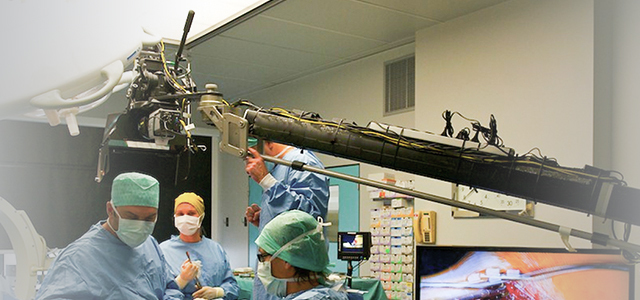3D printing technology at Hefei BOE Hospital for "bone replacement" of cancer metastasis patients
3D printing, implant placement... These words are no longer unfamiliar today. However, 3D printing custom prosthesis implantation remains a high-tech and plays an important role in the field of bone tumors. So, how did doctors cleverly apply 3D printing technology to accurately remove tumor bones and reconstruct prostheses for patients, thereby successfully preserving their limbs and restoring their function?
Tumor metastasis into bone, 60 year old aunt facing osteotomy
The Orthopedic Center of Hefei BOE Hospital successfully completed the reconstruction surgery of the left leg femoral defect for a patient with bone tumors using 3D printed prostheses.
The patient, Ms. Yao (not her real name), was 60 years old and had surgery for bladder cancer many years ago. Recently, she has noticed pain in her left thigh, which is gradually worsening and she is limping when walking. He went to the hospital and was diagnosed with left femur malignant tumor (bladder cancer metastasis).
Ms. Yao came to the orthopedics department for a detailed examination, and the doctor confirmed that there was a malignant tumor in the middle of her left femur. The length of the invaded femur reached 13 centimeters, causing damage to the bone and surrounding tissues.

In order to prevent cancer cells from further spreading and threatening life, it is necessary to completely remove the tumor along with the bone segment containing the tumor. After cutting off this bone, an equally long prosthesis or bone needs to be inserted in order for Ms. Yao to avoid disability.
Ms. Yao discussed with her family and expressed two hopes for treatment. Firstly, she hopes to recover as soon as possible and walk normally; Secondly, we hope to reduce pain and try to solve the problem through a single surgery.
3D printing transforms "cutting feet to fit shoes" into "tailor-made bone cutting"
The traditional techniques for reconstructing limb bone defects mainly include bone transfer, vascularized bone transplantation, and large segment allogeneic bone transplantation. During surgery, it is often necessary to "polish the parts" on site according to the patient’s actual situation to the appropriate matching degree. The postoperative healing time is longer, and the risk of complications such as infection and fracture is relatively high. Moreover, these methods cannot achieve biological reconstruction that meets anatomical requirements in one stage, which has a certain impact on later functional recovery.
3D printing technology is a technology that uses digital model files as the basis and adhesive materials such as powdered metal or plastic to construct objects through layer by layer printing. In the medical field, 3D printing technology can customize specialized medical assistive devices for patients according to their actual needs.
"3D printing belongs to the process of putting effort into preoperative design and printing of precision matched prostheses based on the patient’s own bone shape, bone defect location, degree of defect, etc., using CT, MRI and other data as the basis, which can be directly used during surgery," said Wang Xin, deputy chief orthopedic physician.
How is a 3D printed prosthesis made?
Firstly, the doctor performed CT and MRI scans of the affected femur for the patient to obtain three-dimensional dimensional data of the lesion. Then, with the help of advanced medical engineering fusion technology, the prosthesis was designed, and the manufacturer used 3D printing technology to accurately produce customized prostheses.
Ms. Yao’s femoral prosthesis is printed with titanium powder, shaped like the rolling pin we usually use. The thicker part in the middle is the main body, and the thinner parts on both sides are called medullary needles. It needs to be inserted into the medullary cavity of the bone to serve as a fixation along with other components.

🔺Preoperative prosthesis design
After consultation with the doctor, the 3D printed prosthesis tailored for the patient has been finely adjusted in component design to better conform to the mechanical structure, allowing the prosthesis to be more firmly fixed on the patient’s femur.
"3D printed prostheses are more suitable for the patient’s bone shape and have better stability than traditional prostheses. This technology can improve the recovery of limb function in patients with bone tumors after surgery, providing strong technical support for limb salvage treatment of bone tumors." Dr. Wang Xin introduced.

🔺Postoperative imaging

🔺Enlarged resection of tumor during surgery, approximately 18 cm in length
Based on the advantages of digital orthopedics
High quality service for the vast number of patients
As an advanced technology combining medical and engineering, 3D printing technology plays an important role in preoperative planning, tumor resection, and functional reconstruction of bone tumors. With the assistance of various orthopedic digital technologies, personalized and precise treatment of bone tumors is achieved, avoiding serious complications such as functional loss that may be caused by traditional surgery.
This article is reprinted from "Dingxiangyuan"
Surgerycast
Shanghai Headquarter
Address: Room 201, 2121 Hongmei South Road, Minhang District, Shanghai
Tel: 400-888-5088
Email: surgerycast@qtct.com.cn
Beijing Office
Address: room 709, No.8, Qihang international phase III, No.16, Chenguang East Road, Fangshan District, Beijing
Tel: 13331082638( Liu )
Guangzhou Office
Address: No. 15, Longrui street, longguicheng, Taihe Town, Baiyun District, Guangzhou
Tel: 13302302667 ( Ding )






